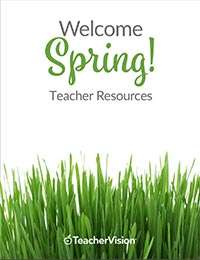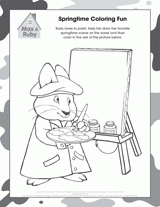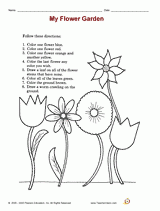Use a School Readiness Activity to provide early mathematical thinking experiences for preschool children that will prepare them to do well in the early grades.
Grades:
Subjects:
See, Say and Touch Cubes (Boxes) and Squares
Please Note: this material was created for use in a classroom, but can be easily modified for homeschooling use.
Purpose/Skills
- To experience the concept of squares and cubes
- To identify squares (2-D) and cubes (3-D)
- To talk about shapes
Materials
Cubes, such as number cubes; different sized boxes that are cubes (all the edges the same length); squares in different sizes and colors, squares around the room; a chalk or masking tape square on the floor; construction paper, glue; The Quilt Story
| shape | shapes |
| cubes | circles |
| squares | faces |
| edges | sides |
| corners |
Literature Suggestion
Read The Quilt Story by Tony Johnson and Tomie dePaola. As you show the illustrations, help children notice the squares in the corner of the quilt.
Warm-Up
Ask children to walk around on the masking-tape square and to notice that the square has sides and corners. Hold up different sizes of paper squares and be sure that children know that a square is a shape. Ask children to name the squares such as green square and black square. Ask children to look around the room and notice any other square shapes in the room. (Ceiling tiles, the window panes, calendar sections, etc.)
Procedure
- Introduce the game "See, Touch, and Say" for cubes and squares. Show children some cubes of different sizes and colors and tell them that they are called cubes.
- Give each child a cube to see and touch. Ask children to feel the cube, say "Cube," and:
- touch the smooth surfaces called faces and say "Faces."
- touch the edges and say "Edges."
- touch the corners and say "Corners."
- Give each child a square to see and touch. Tell children to notice that all four sides of a square are the same length. Ask children to feel the square and say the word square and
- touch the straight sides and say "Sides."
- touch the corners and say "Corners."
- After all of the children have felt the cubes and the squares, ask them to think about how the square and the cube are alike and how they are different. (Children may tell you that the square and the cube have straight edges and corners. They will be able to tell you that the square is flat. Children may say that the cube is big or fat. Respond by saying, "Yes, the cube takes up space.")
Provide a variety of different sized paper squares and circles. Have children glue them down into circle and square designs on construction paper.
Observation Assessment
- Proficient - Child identifies a square and a cube.
- In Process - Child can identify a square, but has difficulty identifying a cube.
- Not Yet Ready - Child does not yet identify a square or a cube.












